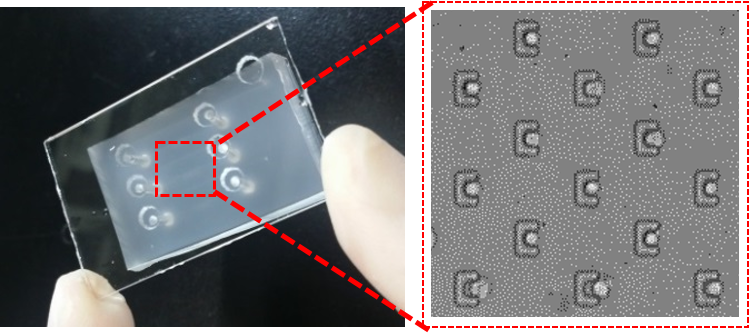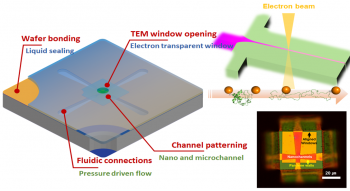RESEARCHMicrofluidics, as a scientific field studying phenomena in fluids with nm to um length scale and its application, has made remarkable advances in the past decades. Microfluidic techniques provide important research tools for many areas, and it is especially favorable for the studies of diverse physical and biochemical properties of cells (down to single cell level) due to its small volume, high sensitivity, easy parallelization and capability to control micro-environments. In addition, microfluidics as an independent subject is also very interesting, involving various areas from fluid dynamics to the engineering of microfluidic components. It is expected that microfluidics will expand its area further by exploring new frontiers, which would require innovative minds and multidisciplinary collaborations.
RESEARCH
Microfluidic calorimeters

We develop ultra-high resolution microfluidic chip calorimeters using thin-film parylene microfluidics. The unique properties of parylene allow the microchannel with a thickness of a few micrometers to withstand the vacuum environment that is used to maximize the thermal insulation. We use the chip calorimeter for dosimetry for radiation therapy, thermal biosensing, and cellular metabolic rate measurements. Especially, measurements of the metabolic heat of cells can provide novel methods for studying fundamental aspects of the cellular energetics at single cell level and many practical applications including cell-based assays for drug screening and toxicity test.
Nanofluidic TEM for Biomolecule structural dynamics
Liquid cell TEM technology has been drawing much attention owing to its capability to study the dynamic processes of nanoscale reactions such as nanoparticle growth in hydrated states. We developed nanofluidic liquid TEM chips that allow fluidic mixing for control of reactions. The nanofluidic TEM chips allow us to study the dynamics of various small-scale processes including inorganic reactions, cellular processes, and biomolecular structural changes. We are conducting a research project funded by Samsung Science and Technology Foundation.
Inertial Microfluidics
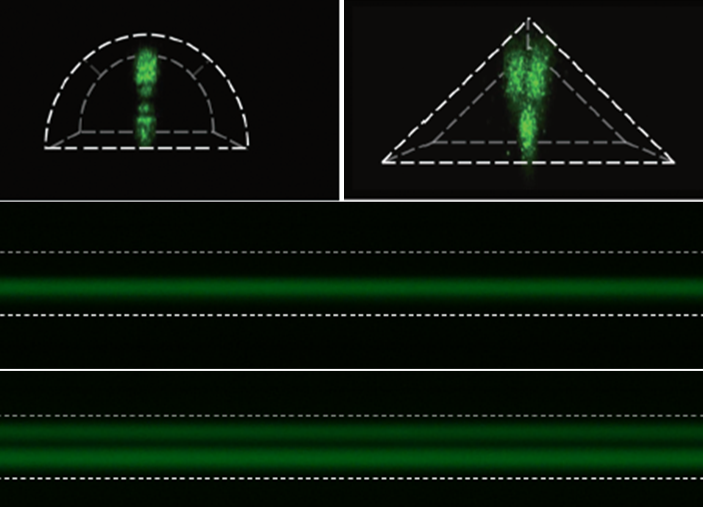
Inertia in a microfluidic system can allow manipulations of microparticles and fluid flows. In these finite Reynolds number flows, microparticles or cells migrate across streamlines due to inertial lift forces in predictable manners and line-up along distinct equilibrium positions. Focusing positions are controllable with various parameters such as channel geometry, Re and fluid properties. These microfluidic systems can be used for applications that require passive and high-throughput particle manipulation such as cell separation and flow cytometry. We are investigating inertial focusing according to different channel cross-sectional shapes and effect of inflection points in velocity profile.
Flexible microfluidics and sensors

Parylene-based, thin-film microfluidic system is developed as flexible microfluidics with microscale bending radius. The flexible parylene channels can be integrated with flexible electronics for manipulation and analysis of body fluids. Flexible microfluidics can also be applied to a rollable microfluidics system, where 2D parylene channels can be rolled around capillary tubing working as inlets to minimize device footprints. In addition, reconfigurable 3D channel geometry with microscale bending radius can lead to microfluidic devices with tunable device functions.
Unconventional microfabrication techniques
In our laboratory, unconventional fabrication methods are developed for the rapid, quantitative, and sensitive measurement techniques that can be used for biophysical, bioanalytical applications.
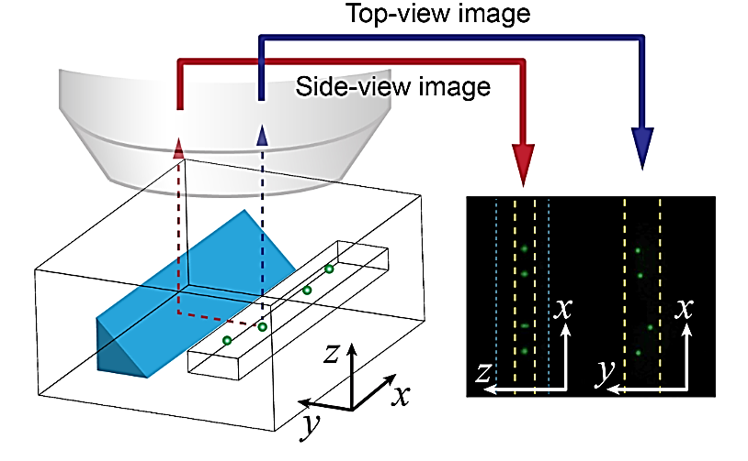
Micro-prism mirror embedded 3D chip
We developed the prism-mirror-embedded microfluidic devices that allow simultaneous imaging of top and side view of a microchannel with one microscope without extra expensive equipment. The mirror-embedded 3D imaging microchannel is made by conventional microfabrication techniques including wet etch and soft lithography and capillary molding. Using the microchannel, 3D information of particle positions and complex flow patterns with microfluidics channel can be acquired in real time.
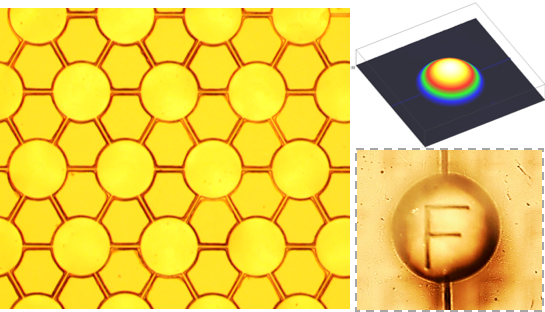
Tunable parylene microfluidic lens
Parylene microfluidic lens can provide tunable focal length by changing the radius of curvature of the lens or the refractive index of filling liquid. Parylene has low gas permeability and is chemically inert which allows it to encompass diverse filling liquids. Due to the excellent mechanical properties of parylene, microlens showed the same deflection for the applied pressure in many repeating cycles.
